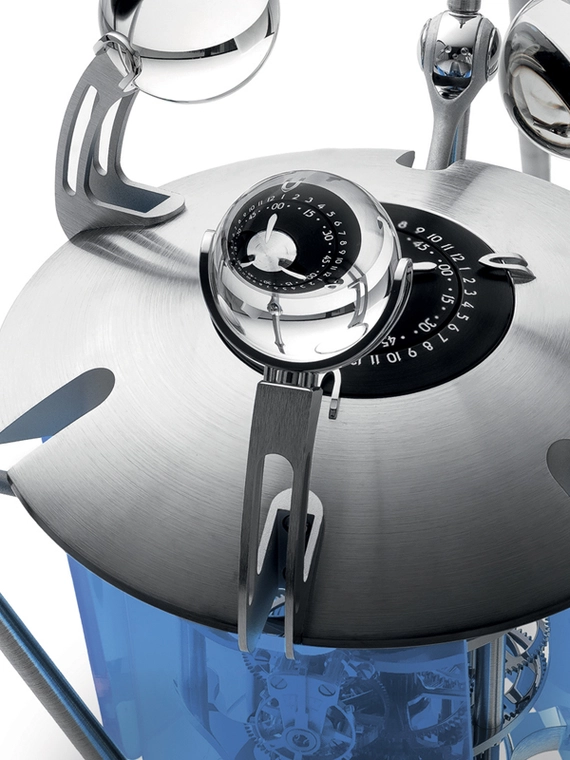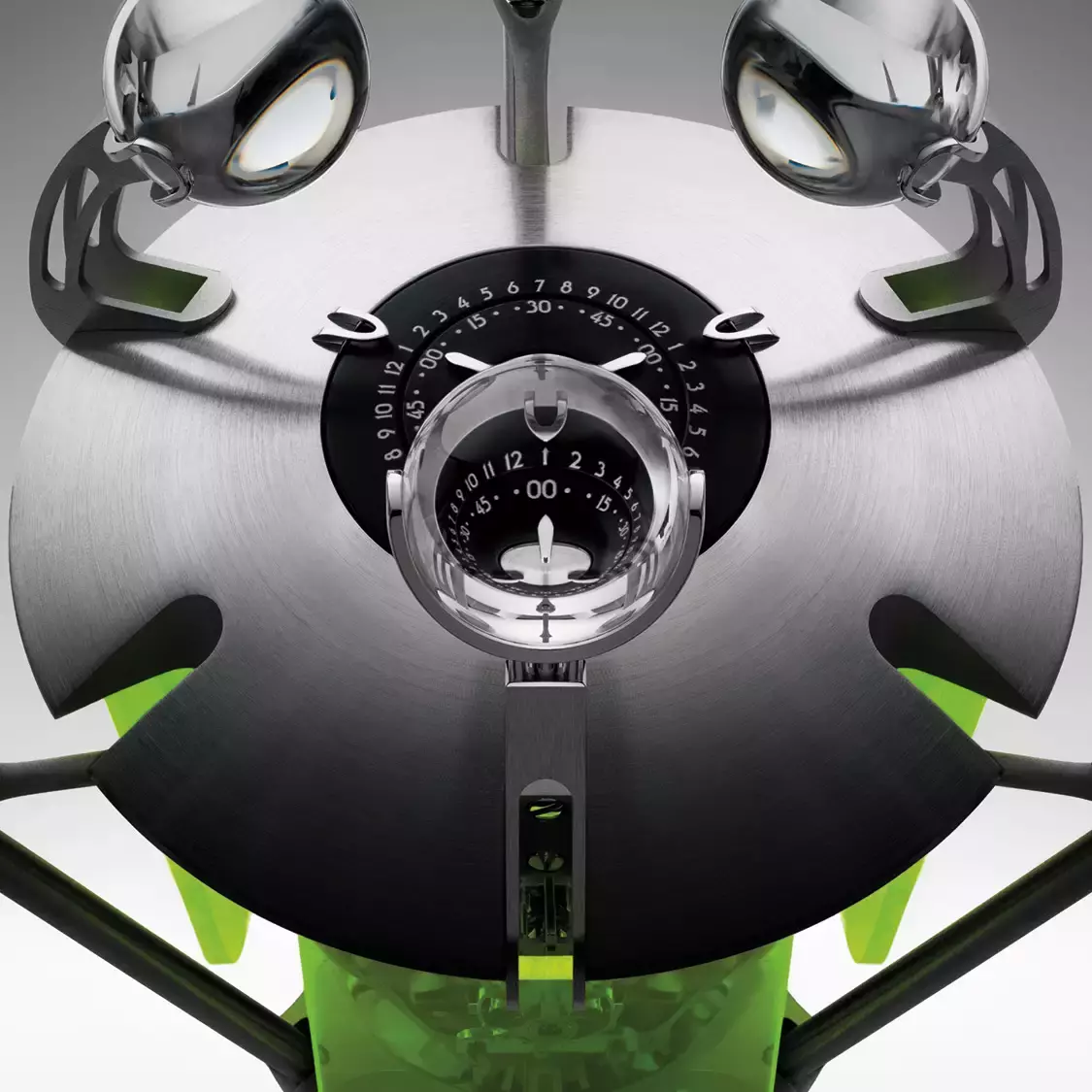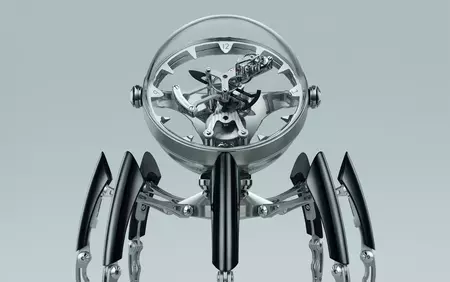
TriPod
L'Epée 1839 x MB&F
TriPod comprises a minimalist clock face suspended between three delicate insect-like legs.
Overview
“Art begets art”, American author Susan Vreeland once famously said. And this is certainly true in the case of Tripod, the 13th collaboration between MB&F and Switzerland’s premier clockmaker L’Epée 1839.
TriPod comprises a minimalist clock face suspended between three delicate insect-like legs. It follows the mighty T-Rex, another half animal/half robot creation that MB&F calls Robocreatures. TriPod’s name originates in the trios that inform it: three legs, three insect-eye spheres, and three movement levels comprising the creature’s mechanical body. MB&F founder Maximilian Büsser describes Robocreatures; “In the same way that H.R. Giger created his Alien universe, we’re creating our own world of creatures”.
About TriPod
Robocreatures could well be future time capsules, fossilised “life” from a prehistoric era. With TriPod, Berlin-based designer Maximilian Maertens, L’Épée CEO Arnaud Nicolas, and MB&F's Maximilian Büsser lead us into a horological post-modern prehistoric era.
TriPod features three delicate legs supporting a colourful body, three insect-eye spheres made of precision lens-quality glass, and a clock dial making one full revolution in 36 hours that indicates three sets of hours and minutes. Underneath the dial is a 182-component three-dimensional sculptural movement crafted on three levels by L’Épée 1839 with a vertical balance slowly beating at a traditional 2.5Hz (18,000vph). Time-setting and winding are by key, and when fully wound the movement offers a generous eight-day power reserve.






A clock as companion
An essential element of TriPod is indicating the time, which is done by looking down on the dial composed of rotating disks. But this clock requires some interaction between Man and Machine: the observer reads the time thanks to three optical spheres, each magnifying the clock’s numerals and making them legible.
To allow all three of the “insect eyes” to show the time from any angle, the dial features three sets of numerals 1-12, meaning that the dial completes a full rotation in 36 hours instead of the customary 12 hours. The time is visible through one of the magnifying lenses at any time.
“These clocks are our companions”, says Büsser. “They live. They tick. They’re like a pet – bringing life into your interior”.
L'Epée x MB&F
Neon delights
TriPod is available in three limited editions of 50 pieces each in neon blue, neon green, and neon red.
- Hours and minutes are indicated on two concentric dials visible from each of the three optical mineral glass spheres. The dials make one full rotation in 36 hours.
- L’Epée 1839 movement, designed and manufactured in-house
- Power reserve: 8 days
- Balance frequency: 2.5Hz / 18,000 bph
- 182 components and 21 jewels
- Manual-winding: double-ended key to set time and wind the movement
- Dimensions: diameter approx. 30 cm, height approx. 26 cm
- Weight: approx. 2.8kg

Discover the models available
Inspiration
Young designer Maximilian Maertens was the creative incubator for TriPod, during his internship at MB&F. The 1993 film Jurassic Park was a big influence on Maertens as it was the first movie he remembers watching as a child. Maertens’ inspiration from his childhood memory was first realized in MB&F’s T-Rex, the first Robocreature clock.
When designing T-Rex, Maertens imagined a backstory to guide his development process to create a coherent balance of mechanical and organic visual elements. That story grew from elements in MB&F’s past projects. As Maertens uncovered further inspiration from his love of Jurassic Park, a new story began to unfold that is now the backbone of the Robocreatures.
TriPod represents how time originates for Jurassic Park. “This insect is the transition between dinosaur and what comes next because they’re all still here”, says Maertens.
While the primary inspiration for TriPod is the mosquito caught in amber that provides the DNA to genetically craft new dinosaurs, for the clock’s look Maertens decided to emulate a water strider, an insect able to walk on the surface of water using surface tension and its long, slender, hydrophobic legs. “It feels much like a levitating insect walking over the water,” Maertens explains, “and this inspired me to create something that looks very delicate”.










